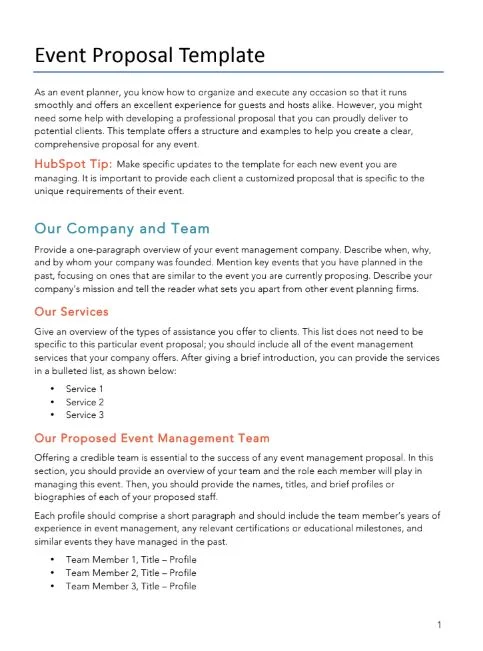How to design an event proposal
A good event proposal design makes things easy to read, keeps clients interested, and guides them toward a yes. The way you present your offer matters just as much as the details themselves.
A clear, well-structured proposal helps clients quickly understand what you're offering and why you're the right choice.
1) Tell a visual story
I don’t know about you, but when someone explains something to me, I need to see it to really get it.
If they just talk me through it, half of it goes in one ear and out the other. And I’m not alone - a lot of people are visual learners.
If you’re pitching venue options, add photos or videos of each one so clients can actually picture what they’re choosing. A well-placed visual makes everything clearer and easier to get excited about.
2) Incorporate your client’s branding
A proposal should feel like it was made for the client, not just repurposed from the last one. With the right tools, you can pull in their logo, brand colors, and fonts in seconds.
It’s a small effort that makes a big difference - it instantly looks more polished and personal.
3) Use data visualization
No one wants to sift through a wall of numbers.
If you're breaking down budgets, ROI, or attendance figures, turn them into simple charts or graphs. This way, clients can take in key details at a glance instead of getting lost in spreadsheets.
4) Personalize the experience
I’m always more likely to pay attention to an email when it mentions me by name. That’s just human nature - we all like to feel special.
And the same goes for event proposals. When a client sees their name, past events, or specific details about their business, it instantly feels like you put in the effort just for them.
With interactive tools, you can automatically pull in client names, reference past events, or even tailor recommendations based on their needs.
Personalized decks get 68% more people reading them in full and are shared internally 2.3x more often. That’s huge when you’re trying to reach multiple decision-makers.
5) Add interactive content to boost engagement
Instead of just showing clients what their event could look like, let them experience it.
Giving them something to play around with - like clickable tabs to compare options or virtual venue walkthroughs they can watch right in the deck - keeps them engaged and makes your proposal feel more dynamic.
Interactive proposals get clients to read 21% longer, which means they’re spending more time absorbing key details.
The more engaging your proposal, the better your chances of keeping their attention and winning them over.
6) Focus on readability
Nobody wants to read a huge block of text. Use ‘read more’ buttons, clickable tabs, and clear sections to keep things structured.
This keeps the proposal detailed without overwhelming the reader. The easier it is to skim, the more likely they are to stay engaged.
7) Invite action
Wrap up your proposal with a warm invitation to take the next step. Whether it's a chat over coffee to hash out details or a simple form to get their feedback, make it clear and easy for them to move forward with you.
Incorporating a digital contact card into your proposal goes a long way for this purpose as well.
Here’s an example of an event proposal designed according to these practices:









